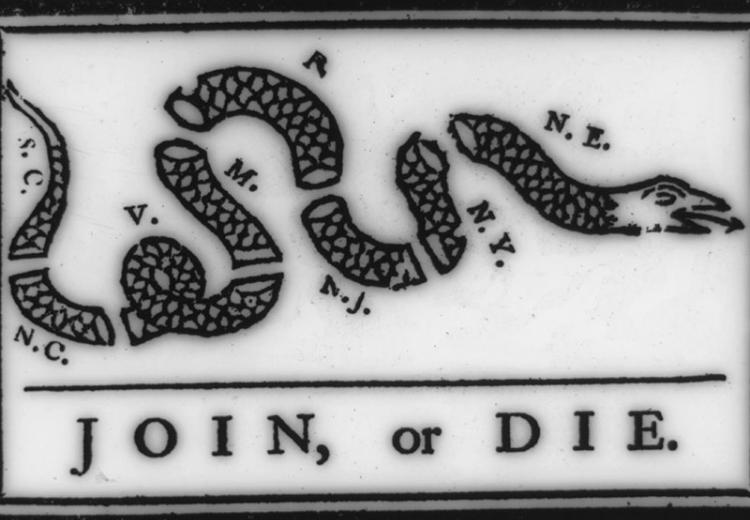Empire and Identity in the American Colonies

Benjamin Franklin’s Join or Die cartoon, one of the first visual sources of colonial union (and disunion), appeared in the May 9, 1754 issue of the Pennsylvania Gazette.
By the mid-18th century, British colonial settlements on the east coast of North America had become part of a vast colonial empire, abutting other European empires and territories occupied by numerous Native American tribes and confederations. The British had developed their empire for political and economic purposes over the previous century, seeking to protect the colonies from European rivals and profit from their colonies’ products and commerce. Around 1750 many nations and peoples were engaged in a contest for North America – and some of these competing parties came together at the Albany Conference that took place in June and July of 1754 under British auspices.
In this lesson students will examine the various visions of three active agents in the creation and management of Great Britain’s empire in North America – British colonial leaders and administrators, North American British colonists, and Native Americans. Students will assess the identities and relationships of these groups in the context of the Albany Conference of 1754, where they came together at the behest of British officials seeking greater colonial unity in anticipation of a war with France for North American territory.
Guiding Questions
How was power distributed between the colonial administrators in London and the colonists and American Indians of North America ?
What were the short and long term effects of the Albany Plan?
Learning Objectives
Analyze the social, economic, and political tensions that marked North America in the eighteenth century.
Examine primary sources to determine the nature of the British imperial system in North America and the relationships of the rival groups it contained.
Evaluate the different perspectives of British colonial leaders, North American British colonists, and American Indians.
